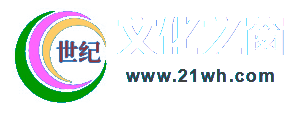一、There be句型的意义
There be 句型,有时也被称为There be 结构。其意义也就是说什么是There be 句型,它是什么,什么情况下使用,怎么用?
1、There be 句型表示的就是某地或者某时存在某人或者某物。其中包括五个关键词,即某地,某时,存在,某人和某物。
①某地就是随便一个地方,无论大小。
②某时就是时间,有过去,现在,将来。
③“存在”是什么意思?就是“有”的意思。我们能不能说"这条河里存在一条小船",我们一般不会这么说,而是说"这条河里有一条小船"。所以说,这里的"存在"就是"有"的意思。同样,我们也不会说"这个教室里存在10个学生",而是说"这个教室里有10个学生"。所以我们说"存在"就是"有"的意思。
④某人不是指具体的某一个人,而是泛指一类人,如不能说这里有一个Mike,而是说这里有一个学生。不能说教室里有3个Tom,而是说教室里有了个学生。因为这类词都是专有名词(以后再说什么是专有名词),人名,不是一类人的名称。
⑤同样的某物也是这样解释。
2、我们明白了There be句型含义,下面说一下如何使用,怎么使用。
学习语言的目的是应用,而这种应用更多的是口头上的表达,而口头上的表达也无非是对人或事物的描述和疑问。而描述用到更多的是肯定描述和否定描述。也就是肯定句和否定句,疑问就是疑问句,还有它的回答包括肯定回答和否定回答。
举个例子,先描述一个场景,比较简单的。
这个房间里有一个男孩。
There is a boy in the room.这是一个肯定句(肯定描述)
怎么变成一个否定句呢?根据汉语言的习惯都是在动词前加一个“不”字或者“没”或者其他的否定词。而英语中通常加“not”来否定。There be 句型中,be是动词,其有两种形式,即is和are,所以在变成否定句时,就直接在is后加not就可以了。即
There is not a boy in the room.或者
There isn't a boy in the room.(is not=isn't)
英语中的疑问句形式不同的时态有不问的规律,凡事有am,is,are的句子,(从句除外)都是把am,is,are提到句首(句子最前面),句末加上问号就可以了。至于句中其他词的变化另外叙述。上面的句子变成疑问句就是
Is there a boy in the room?其回答是
Yes,there is.(肯定回答)
No,there isn't.(否定回答)
实际生活中,根据实际情况来回答。
There be 句型的其他形式与此相同,只是be有不同的变化,
一般现在时中用is和are。
一般过去时中用was和were。
一般将来时中仍然是用is和are
二、There be句型的时态
(1)、基本时态
1、There be 句型的一般现在时,即There is/are…
2、There be 句型的一般过去时,即There was/ were…
3、There be 句型的一般将来时,即There will be…和There is going to be…和There are going to be…
(2)、基本用法
1、There be句型中,一般现在时和一般过去时中的be都有数的变化,就是说be 有is和are,was和were之分。
2、There be句型的一般将来时中,There will be中的will 没有数的变化,be始终不变。而另一个有数的变化,即There is going to be 和There are going to be,其中be也没有变化。
3、例句
①There is a cat in the room now.
②There are many cats in the room.
③There was a cat in the room last night.
④There were many cats in the room last night.
⑤There will be a cat in the room tomorrow.
⑥There will be many cats in the room
tomorrow.
⑦There is going to be a cat in the room
tomorrow.
⑧There are going to be many cats in the room
tomorrow.
三、There be 句型的就近原则
在There be 句型中,be是动词原形,而应用时,①在一般现在时中,有is和are两种形式;
②在一般过去时中,有was和were两种形式;
③在一般将来时中则没有变化,即There will be 、
There is going to be和There are going to be
中的be都不变化。前面的is和are不是There be 句型中的be而是be going to结构中的be。
什么是就近原则呢?
就是说,在使用There be句型时,be在一般现在时中有is和are的选择,在一般过去时中有was和were的选择。意思就是be和其后面的数保持一致。如果be后面是单数或者不可数名词时,一般现在时中选择is,一般过去时选择was;be后面'是复数名词时,一般现在时用are,一般过去时用were,There is going to be和There are going to be中is和are的选择也是如此。
"就近"就是"最近",无论第一名词后有多少名词,都与is和are的选择无关。例如:
There is an egg and some apples on the desk.
练习
①There is a ruler on the desk.
②There is some water in the bottIe.
③There are three apples in the box.
④There was a dog under the desk last night.
⑤There were many cats on the street
yesterday.
⑥There is going to be a party tomorrow.
⑦There are going to be some persons in the
room tomorrow.
⑧There will be a film tomorrow morning.
⑨There is a pen,two books and many pencils
on the desk.
